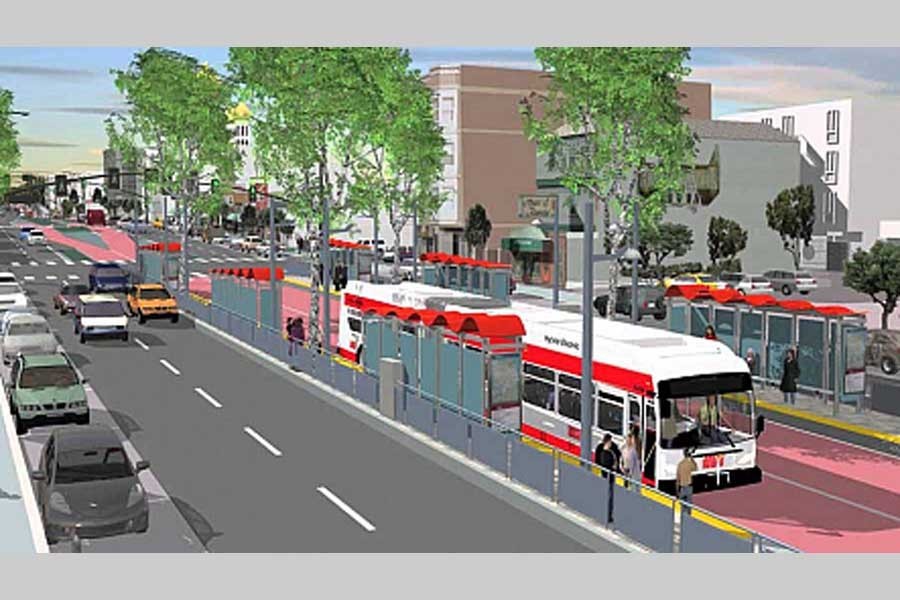Despite being an expensive and inefficient solution to terrible traffic in Dhaka, the policymakers of the country approved the introduction of Bus Rapid Transit (BRT) system almost a decade ago. The ambitious project of constructing 42-km Gazipur-Airport-Mohakhali-Keraniganj BRT corridor or dedicated bus lane has, however, already faced a series of obstacles. Thus the overall progress of the project is limited.
The big setback for the project is that it has to halve the corridor as a dedicated bus lane from Mokhali to Keraniganj seems unfeasible and non-implementable. So, the current focus of the project is the 20-km northern part of the proposed corridor or Gazipur-Airport dedicated bus lane. So far, only 34 per cent of the total construction has been completed in seven years although it was projected to be complete within four years. A report published in a vernacular newspaper last week, however, unveiled that faulty design coupled with wrong planning has not only delayed the construction but also doubled the cost of construction. The initial cost of the project was Tk 23.91 billion. Even after revising the plan twice, it was not possible to avoid and fix the fault in design and specifications.
The disappointing development of BRT is nothing but a reflection of bad governance in the country's policy planning process. Instead of focusing on a cost-effective but efficient solution to provide smooth mobility for thousands of daily commuters, opting for a costly solution will never bring any desirable outcome.
While the idea of BIT is to ensure fast movement of buses on dedicated lanes, separated by dividers and corridors, it occupies a significant portion of roads and cut the width of roads. Thus space for other motorised vehicles also reduced. It also requires many extra infrastructures like service lanes, footpaths, overpasses, underpasses and bus stops. All these compel to compromise on existing road facilities.
BRT has failed in many cities in the world. Delhi has dismantled its BRT a couple of years back. BRT in Pune, another Indian city, has failed to improve traffic movement. Hanoi BRT, launched in 2017 after a decade of construction, is also another example of the failure of a costly mass-transit project. There are other examples also.
Nevertheless, it appears that policymakers in most of the developing countries are less interested to take lessons from the failures of their counterparts. That's why these cities are constructing an inefficient and costly BRT system.
It is interesting to note that donor and development agencies usually bat for BRT projects and present rosy picture of cities' future landscape as a success. Some local experts also endorse the idea. All these are used to make an exaggerated claim on the benefit of such a project. For instance, in a transport and communications bulletin for Asia and the Pacific, published by UNESCAP in 2017, argued that BRT in Dhaka would improve urban public transport and reduce air pollution, mitigate impacts of climate change in Dhaka and improve road safety.
A misleading impression has been created in many developing countries that BRT programmes will successfully deal with the existing shortcomings of public transport. This is also the case in Dhaka. The reality is that the cost it usually takes to finish a BRT project, its effectiveness becomes marginalised by the time it has completed.


